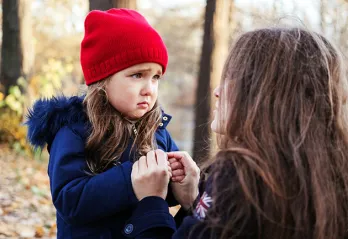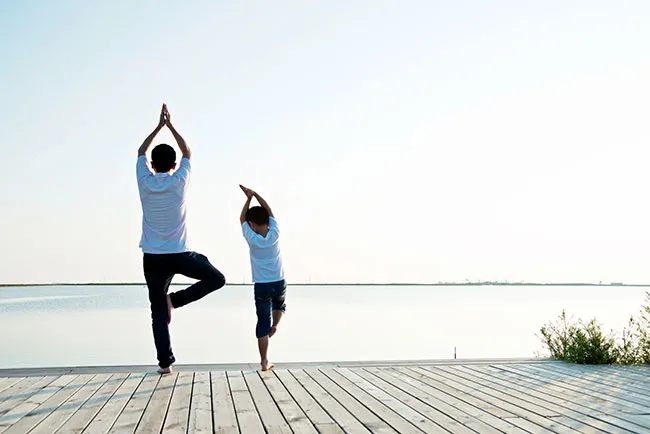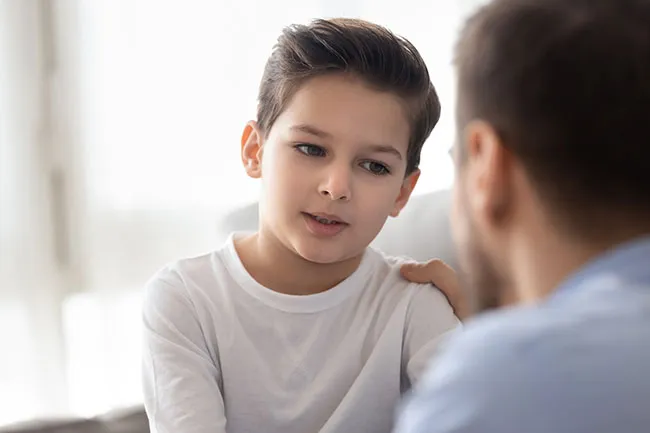Your Kids Are Stressed Too You May Not Even Know It.

Stress is coming at us in forms we hadn’t dreamed of a few short months ago. Whether it’s the news of what is happening in the outside world or the tension created by the dramatic changes inside our own homes, rising blood pressures and shortened tempers are running rampant.
It’s easy to forget that children are experiencing the stress of the upheaval of their world, too. Even those too young to understand words like “pandemic” or “quarantine” feel the emotional changes and notice the absence of normal routines.
During this tumultuous time, it is especially important to recognize indicators of stress in your child and to learn to help them cope in a healthy way.
Recognize Changes
Remember that you are the expert when it comes to what is baseline normal for your child. Recognizing the abnormalities in their moods, behaviors, speech and habits can be deceptively difficult right now. So much within the household systems and routines has shifted. Subtle changes in your child could easily be written-off or unnoticed.
Physical Symptoms
Physical signs of stress can include stomachaches, headaches, random muscle aches as well as a myriad of other symptoms. In some children, canker sore outbreaks can be triggered by stress.
The human body is complicated. Be alert to symptoms with no obvious physical cause. While it’s always best to check in with your physician, don’t discount the possibility that unusual physical symptoms, especially when there is no obvious physical source, could be an expression of stress.
Behavioral Signs
When experiencing stress, young children will often revert to a developmental stage or habit they had previously left behind. With children of all ages, consciously note recent sleeping and eating patterns during times of change and stress. And, while there is likely more free time at home than usual during the current pandemic, don’t be too quick to dismiss excessive vegging out on the couch. It’s possible this is an expression of emotional withdrawal and a tactic to suppress uncomfortable or overwhelming emotions.
Check in with others who know your child. Ask if they have noticed any unusual behavior. Overall, monitor any actions that are out of the ordinary.
Emotional Indicators
We tend to recognize erratic moods, tantrums and unusual emotional responses as reactions to stress, but some signs are less intuitive. Notice how often your child expresses anxiety. Something as random as a sudden preoccupation with a fear of spiders could actually be a misdirected fear of getting sick or simply generalized anxiety from the insecurity they are experiencing.
How to Help
Are you spotting some of these signs in your kiddos? Here are a few ways for you to support them as they work through their worries.
Listen, Listen, Listen and Listen More
It is easy for us as parents to skip straight to advising and solving when it comes to our kids’ problems, but step one is essential when dealing with a stressed child: listen. Really listen. Steer clear of interjecting and interrupting.
If your child isn’t opening up to you, do what you can to stack the odds for the next try. Consider the activities, times of day and settings where they tend to be the most talkative. On a hike? Late at night? In the car? Whatever the tendency, recreate the space in which they seem most likely to share.
Name That Emotion
Putting labels on feelings is difficult. Children have had less practice developing this skill than adults — they will likely need an adult’s guidance in the process.
After listening, reflect back what you heard your child express. Take care to empathize with their struggle and praise them for their honesty and openness. Then give them time to consider and clarify. You may have misunderstood them, or they may be developing new clarity on the situation through this process. Once it is evident that they feel heard and accurately understood, work together on naming the emotions they are feeling. It can be helpful to use phrases like, “It sounds like you’re feeling... Does that sound right to you?” Use body language as clues.
There are likely numerous emotions hiding within these signs of stress. Patience is a real virtue here. Again, don’t rush to the solving phase. Sitting together in silence for a time can be a key part of processing.
Give Age-Appropriate Information
Arming a stressed-out child with clear information and honest assurance helps make them feel empowered. And when you can help them understand what healthy actions they can take to combat their concerns, all the better.
If, like so many of us, the current pandemic is rattling your child, make sure they have a developmentally-appropriate understanding of the facts. Educate them about what the government, schools and you as parents are doing to keep them safe and their lives stable. Teach them why the protocols they are participating in (hand-washing, social distancing, etc.) are helpful.
Beyond the Conversations
In addition to the communication aspect, equip your child with tools to manage stress within their bodies. Teach them to tune into what their bodies feel like when they are holding tension and emotional distress.
Explore meditation and yoga together. Dive into a creative outlet. Do some good old-fashioned cardio. Get outside. You will double your gains because it’s probable that you, too, are experiencing stress, if not in direct response to the source of your child’s stress, certainly in response to seeing your child in distress. And not to pile on the guilt, odds are that they picked up on the original stressors as a result of your stress.
Make managing your own anxiety a priority. Seriously!
Finally, don’t neglect the obvious: sleep, diet and exercise. They can go a long way toward bolstering general physical and mental health.
Professional Help
If you find that you need additional help in managing your child’s stress, reach out to a professional. Not only will you be getting the support you both need, you will be teaching your child that this is a healthy, viable choice.
As your child’s first line of defense and greatest advocate, the challenges and opportunities abound. Stress is a fact of life. Preparing them to recognize, name and cope with the stressors that emerge are tools that will serve them for a lifetime.


